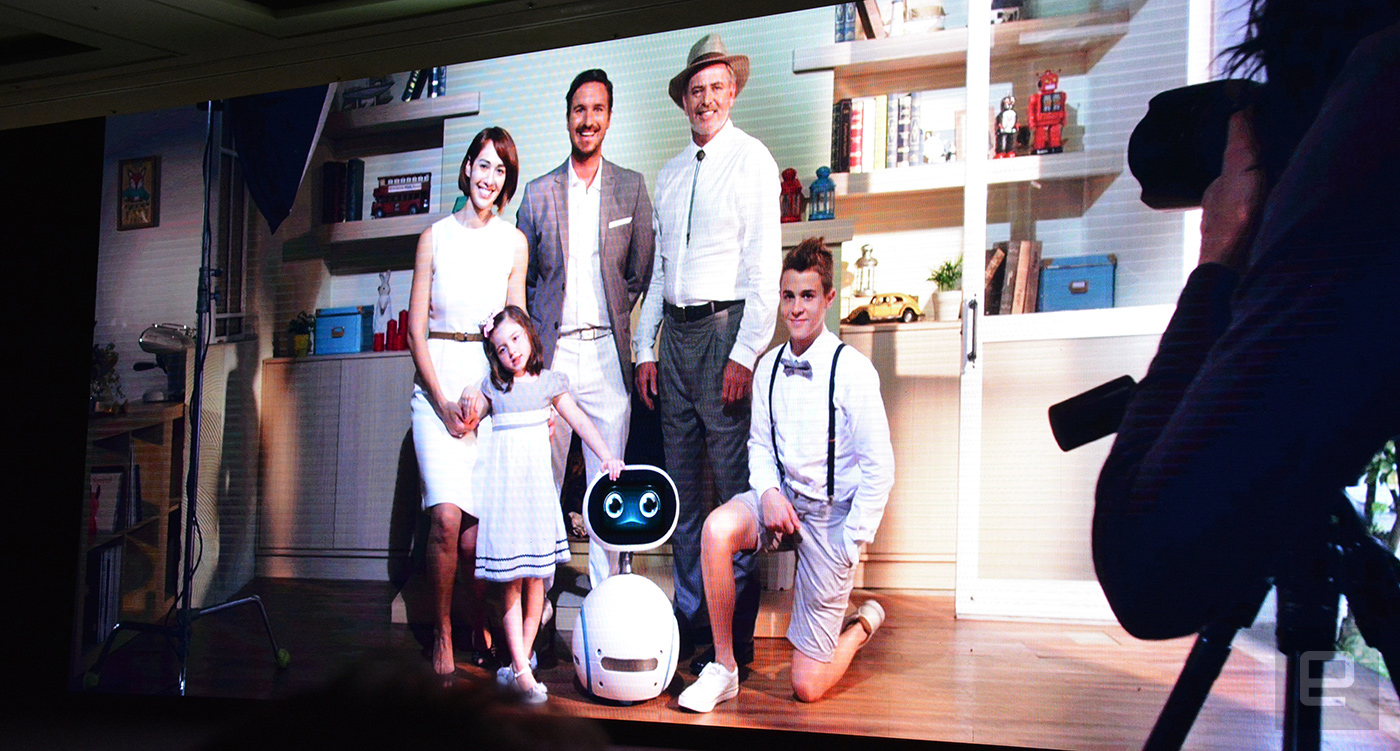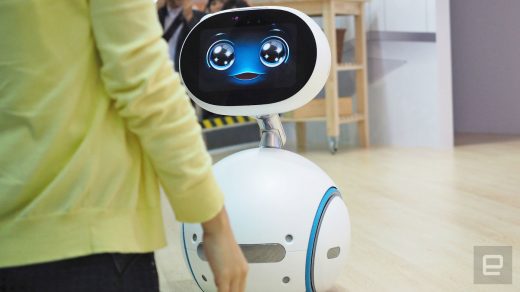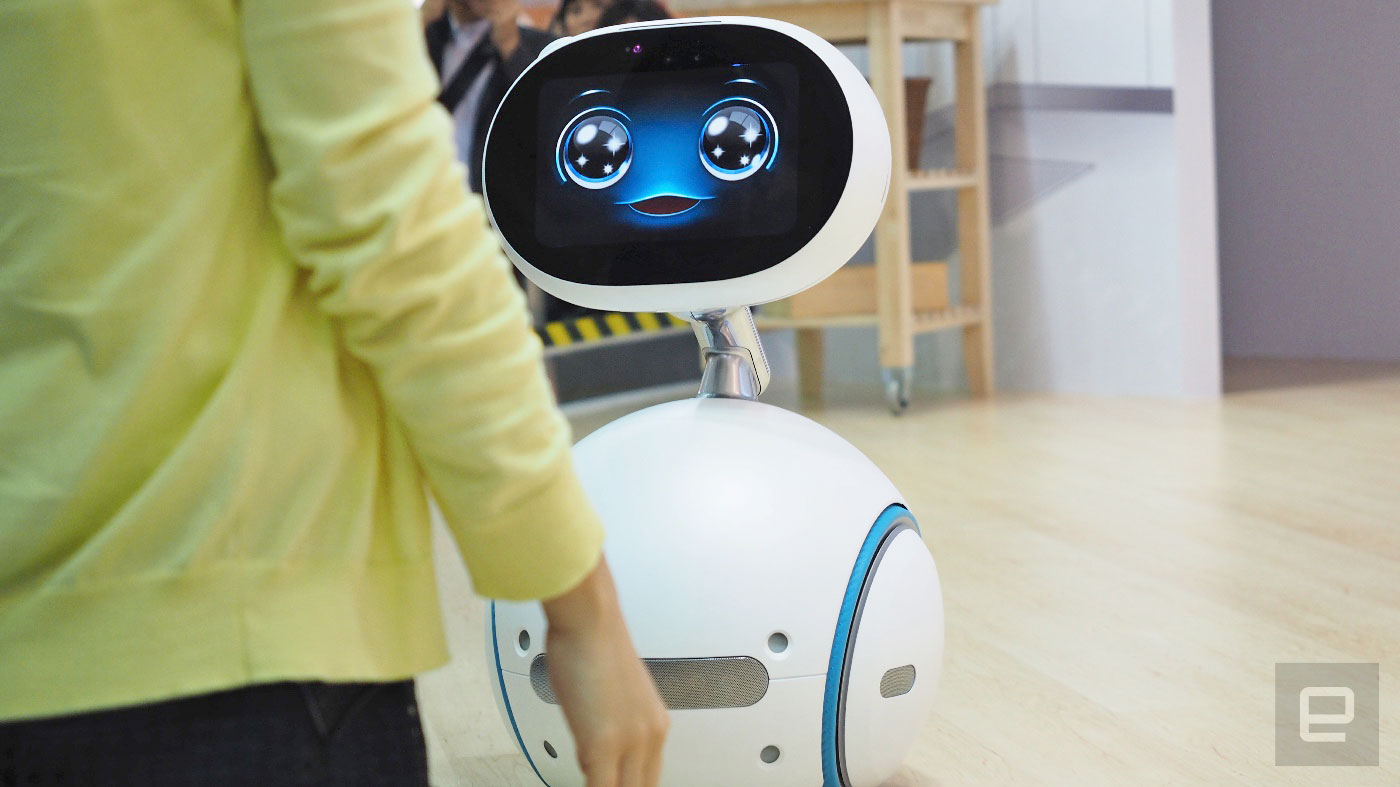ASUS’ Zenbo proves our robot butler dreams remain just that
Another robot wants to join your family. Announced earlier this week, ASUS’ Zenbo is aimed at providing “assistance, entertainment and companionship.” Like numerous home robots that have (literally) rolled out before Zenbo, it involves voice-activated commands, cameras, an internet connection and a touchscreen. It can’t wash your clothes or clear the table and you still need separate robots to vacuum your house, or get you from A to B. ASUS says Zenbo can help with cooking, but that just means it can read out recipes. It’s not chopping onions for you — it doesn’t even have arms. Let’s take a look at the promo video.
In the world of ASUS’ TV ad, WiFi connections are strong and acting skills are weak. We’re shown how Zenbo can detect faces and take photos and videos through voice commands. It will also respond to questions. It gives reminders for medication or upcoming events, has built-in speakers for streaming music, and can even connect with smart home devices like air conditioners, lighting, TVs and connected door locks. And yet, smartphones and tablets can already do all of that. I have Siri on my iPhone, I can play music on it, I can use apps to control my smart devices and it even has an alarm and calendar.

What differentiates the robot from your smartphone is its ability to move around either independently or through smartphone controls, like remote home monitoring. According to the company, Zenbo will learn and adapt to how you use it with with proactive artificial intelligence. As it lives alongside you, it’ll get better at identifying objects and people on its cameras, as well as recognize speech commands. ASUS says machine learning and cloud computing will help improve the robot’s functionality; Zenbo will be connected to a hive mind of all the other robots. It’s still so very far away from the robotic butler we’re still waiting for: Machines are getting smarter, but robotics are hard. There’s no Rosie, no C3P0, no Kryten. Heck, there’s not even a Bender. They’re all still many years away.
Here in the present, the world isn’t as perfect as the ASUS family vignette. The onstage debut of Zenbo (and three subsequent demonstrations I saw over this past week) showed that manipulating a robot can be just as frustrating as working with pets and children. Sometimes Zenbo didn’t go where it was told, or it didn’t hear the host’s simple commands (despite them being repeated multiple times). On other occasions, Zenbo failed to pick up on camera gestures, or it simply stopped and did nothing. Yes, this was an early model. And yes, the company will continue to refine its behavior and sensitivity, but as it stands, it doesn’t have enough pros to outweigh the cons.
It’s not fair to single out ASUS’ Zenbo bot, although the promotional ad was particularly awful. I’ve already written about how we have to lower our expectations about what robots are capable of at this point in time. Indeed, the same criticism can be leveled at most home robots, some of which are already on sale. Softbank’s Pepper could also be described as a glorified tablet on wheels. Its gestures and movements are adorable and endearing, but its speech recognition is far from perfect, and there’s still no killer app, other than the romantic notion of having a robot in your home.

There are still so many technical challenges facing robots, with researchers and companies chipping away at challenges related to movement, motor control and object detection, among other things. Sci-fi films and television shows have set our expectations very high, so it’s no surprise that current home robots are a bit of a letdown. ASUS’ first bot is at least “reasonably” priced at $599, but the reasons for buying one aren’t strong enough — yet.
(35)





